I’ve been curious about intaglio, and when I saw Intaglio Printing Without a Press: Tetra Pak Collagraph by Handprinted, I just had to try it.
According to Handprinted, “Drypoint is an intaglio printmaking method that involves scratching an image into a plate with a pointed tool. These lines create a burr that holds ink that reveals the drawing. It is the opposite of relief printmaking as it is the sunken areas of the plate that print rather than the raised areas” (Handprinted, 2015).
I drew an old abandoned house on tracing paper inspired by Freya_De_Cay‘s image.
I washed and cut a juice, Tetra Pak. I transferred the graphite side of the tracing paper drawing to the Tetra Pak using a bone folder. You can use a wooden spoon as well.
I used an awl to scratch the outline of the drawing back and forth to create an incision. Handprinted suggested using a nail as an alternative. The process was time-consuming.
I used a Xacto blade to peel away the top layer to reveal some of the cardboard layers underneath. The purpose is to print a darker tone. I kept looking at the reference image to guide me.
At this point, I soak the 300 gsm watercolor paper in a basin of water. You need to use at least 300 gsm to prevent any warping.
I used credit card-sized thick cardboard to get a small amount of block printing ink and apply it onto the plate.
I also used an onion mesh to push the ink into the lines in a circular motion.
I used tissue paper clipped between my fingers and gently clean the excess ink on the surface. I tried not to clean too much so the ink in the lines will remain.
I grabbed the drawing again and marked the areas that I want white with a “w”. Then I used a cotton bud to remove the ink that I want to remain white.
The surface of the plate still has some ink. In the future, I can try and remove more of the ink using tissue paper.
I put the wet watercolor paper on the towel to blot out excess moisture. I think the paper was soaked for more than 30 minutes.
I gently place the damp watercolor paper on top of the inked Tetra Pak plate, then I place another scrap paper on top of it then used a wooden spoon to rub the surface vigorously to help transfer the print.
When I peel the paper, I was mesmerized by the outcome. I was surprised that the ink gave me enough working time.
I used a grey water-soluble pencil to add details inspired by Freya’s image. The intaglio drypoint printmaking was a rewarding learning experience. I hope you enjoy reading and try creating one yourself.
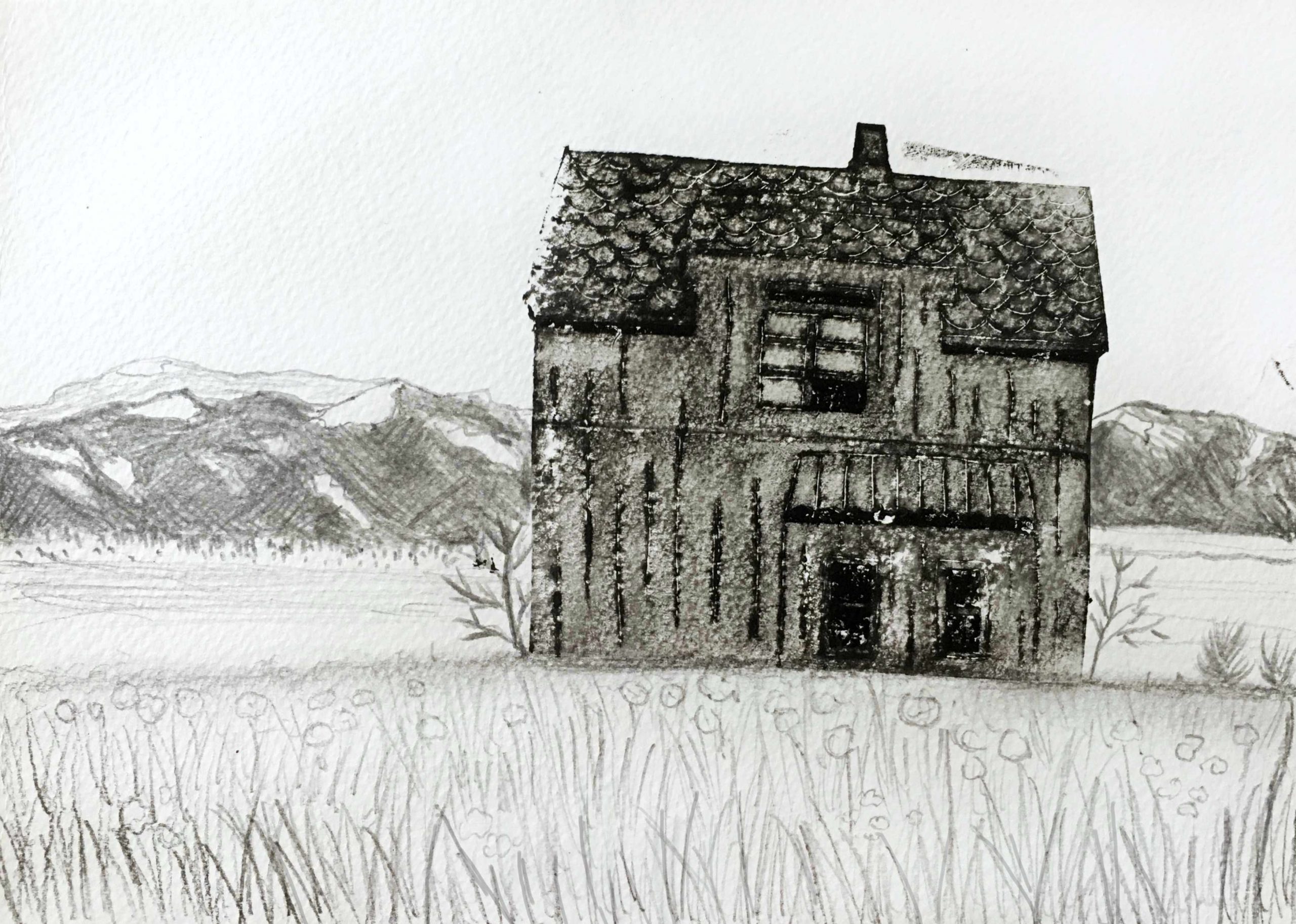

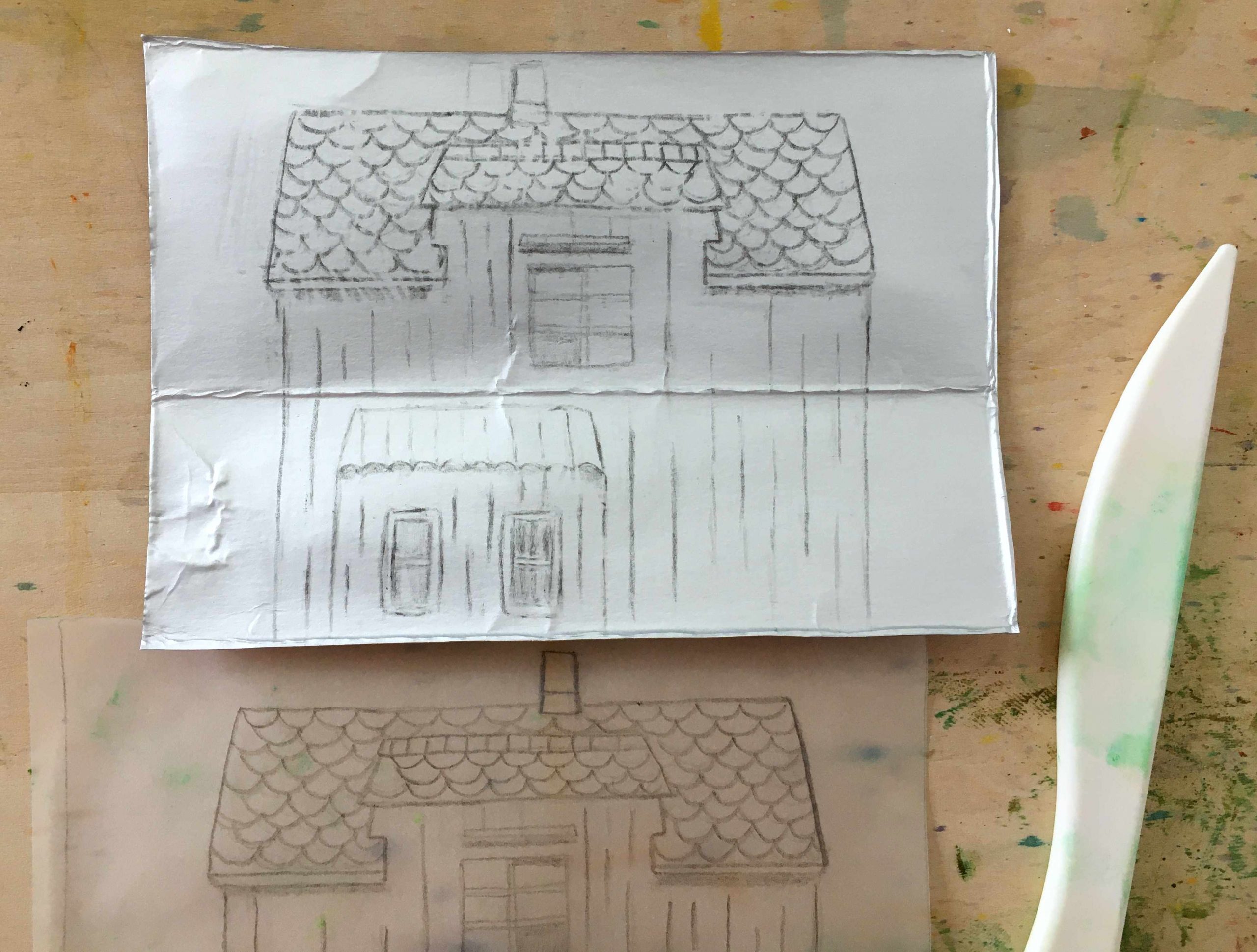

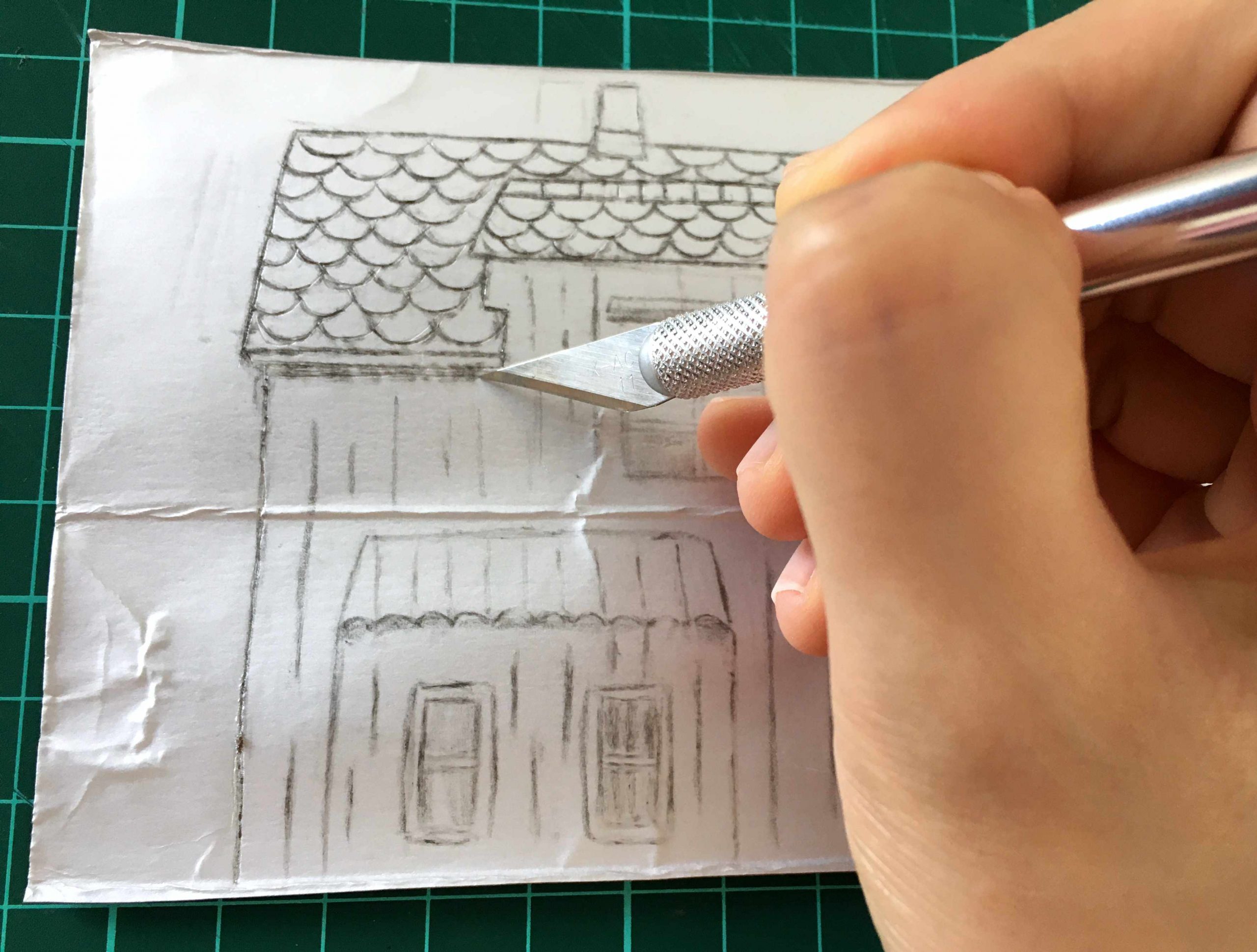


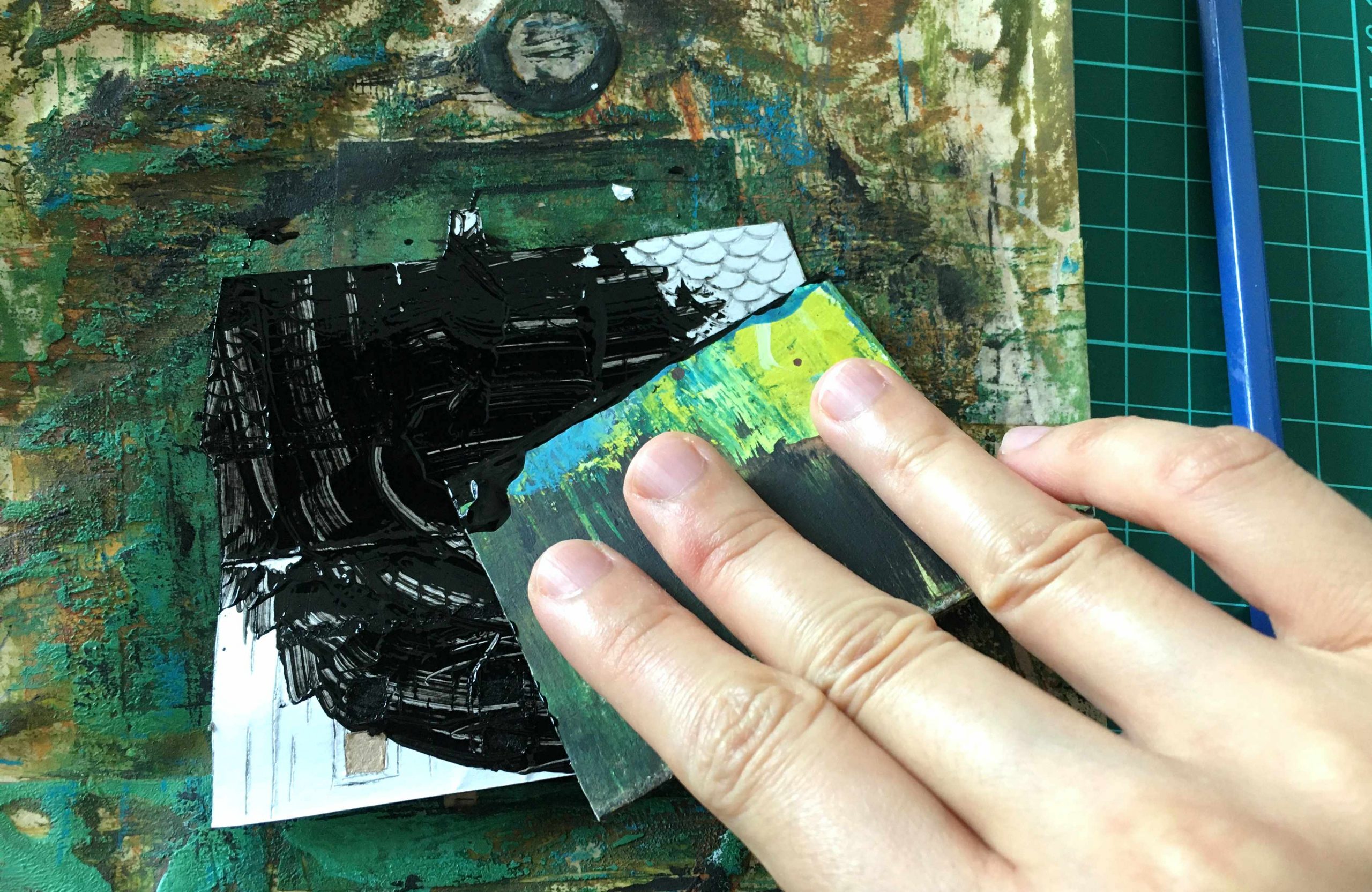
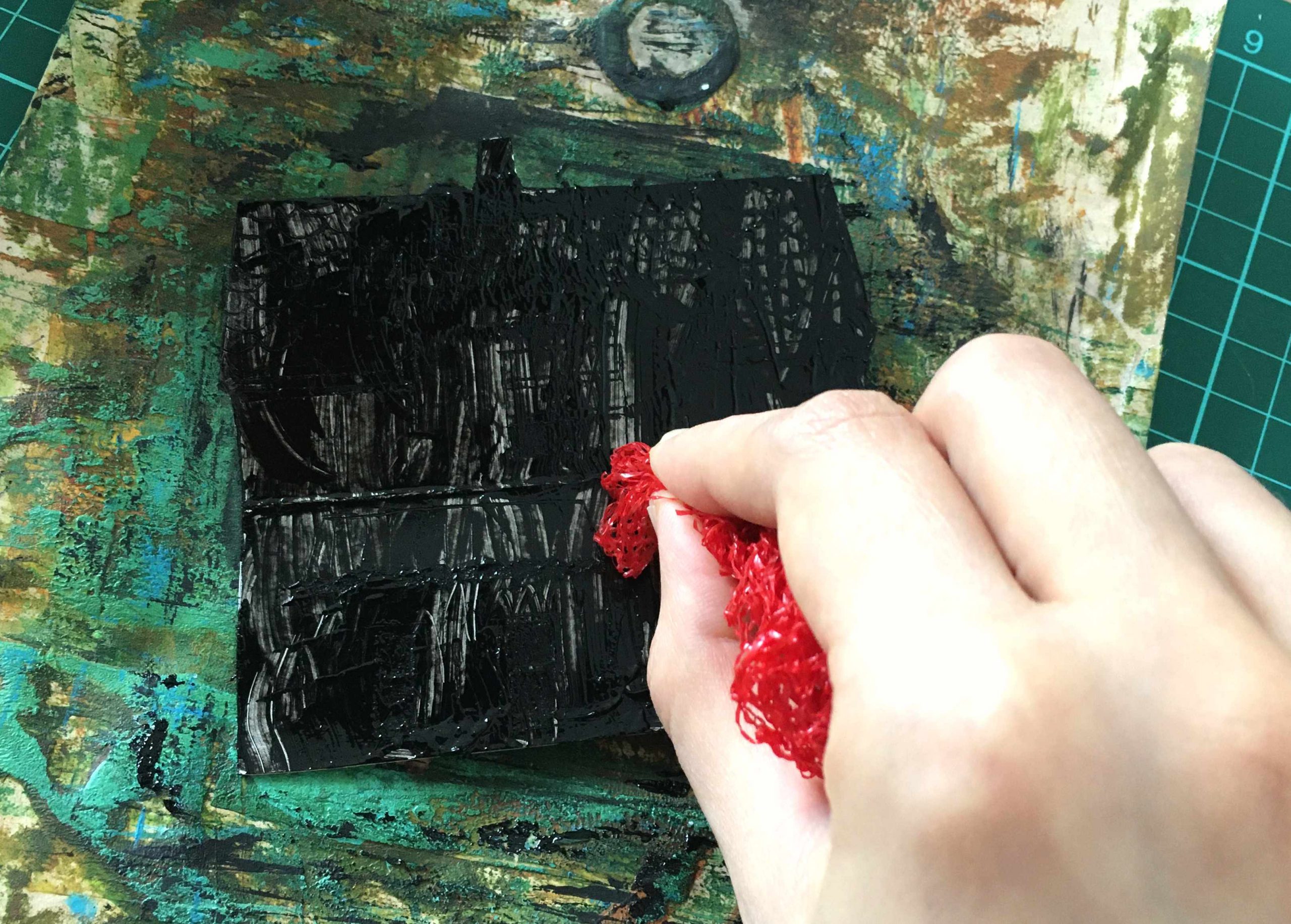


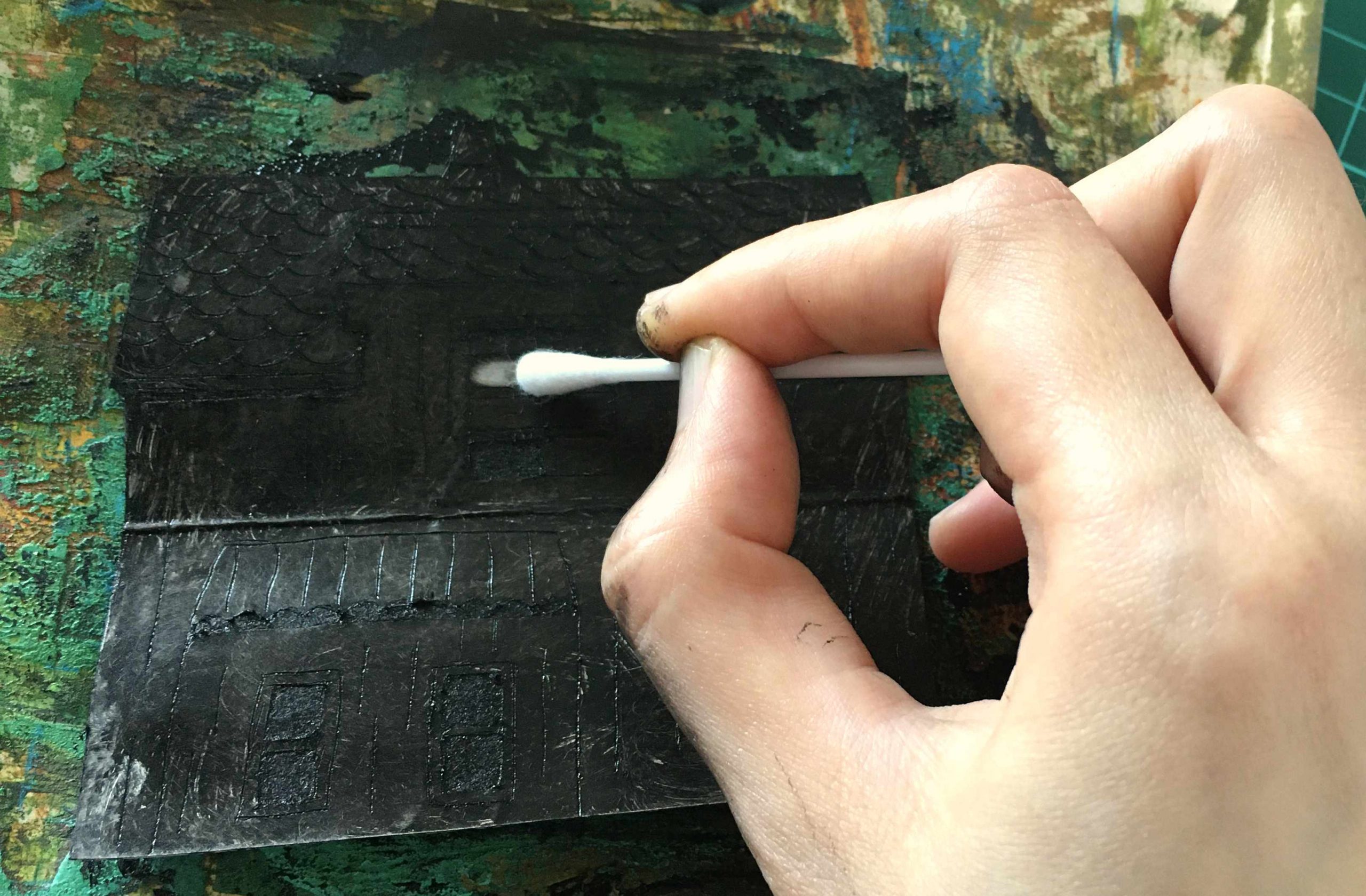
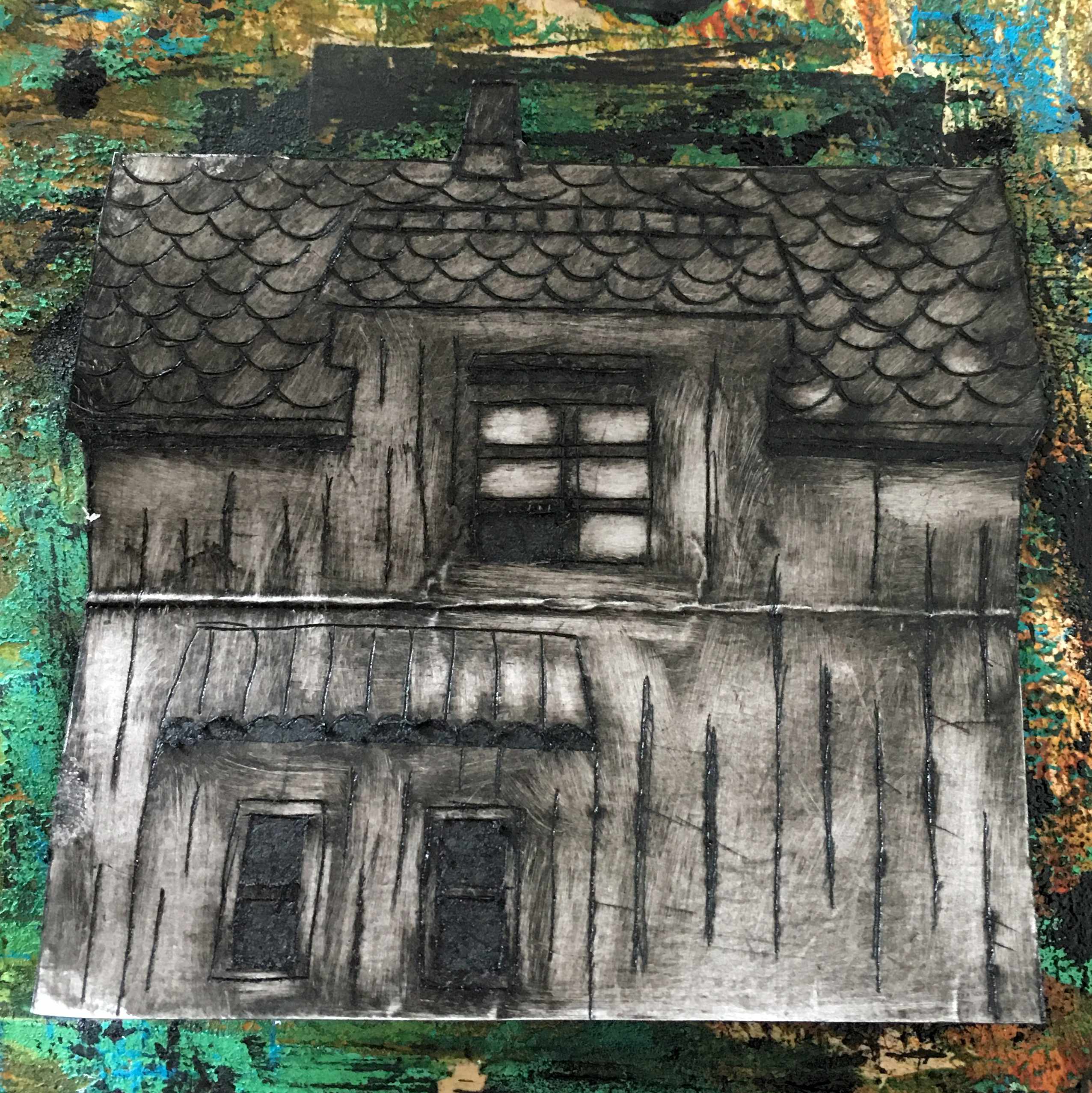
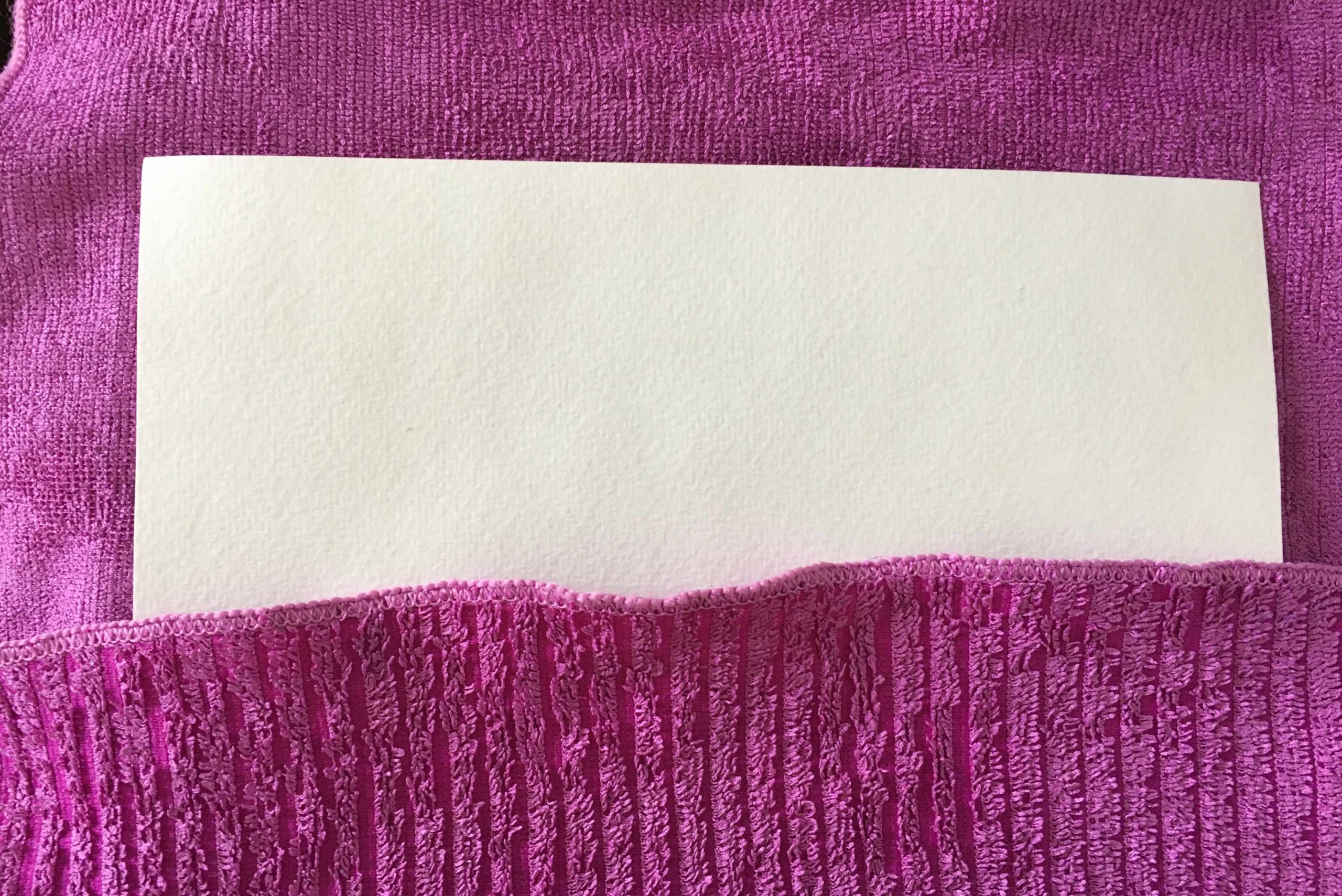


2 Responses
Lixian
Hello! Was the block printing ink you used water based? I’m trying this technique at the moment and some of my prints have come out blurry.
Elisa Choi Ang
Hi Lixian, sorry for the late reply. I used Daler Rowney block printing ink which is water soluble. It doesn’t always work for me too. The best ink should be the stay open inks like Akua, so you can work longer on it. If it’s blurry, perhaps the paper is too damp? Sometimes mine came out too dark and that’s because I didn’t remove the ink much because it has dried already. Keep practicing, and experimenting!